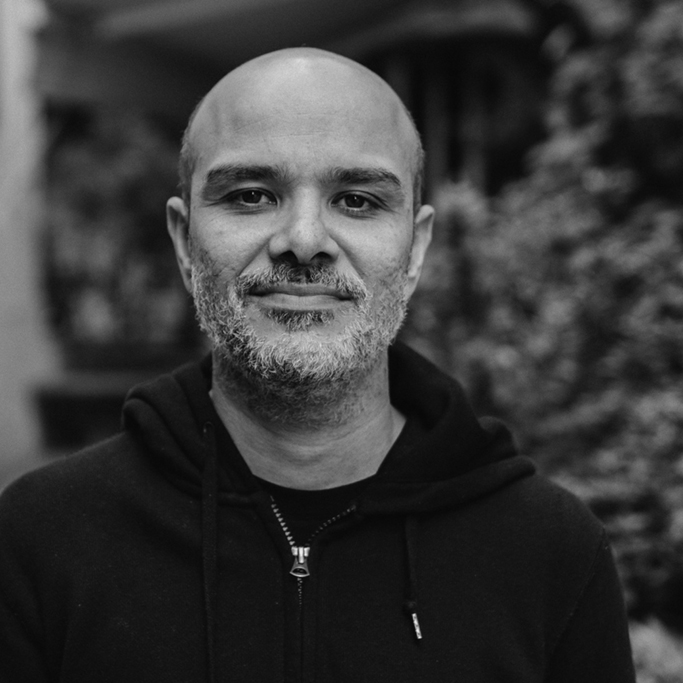Those who know, do it live
by Fred Coelho
Making a community from making art. In some way, this approach has always been present in the work of Raul Mourão. Despite the fact that his works are not necessarily focused on this idea, his journey through different fields of activity has made such encounters one of his tonics. Bringing people together, articulating opinions and working collectively have shaped Mourão’s career in spaces, magazines, parties and organizations such as Jacarandá (a space and publication). Bringing people together and transforming this into a power plant is one of his more distinctive characteristics.
Experienza Live Cinema somehow transfers this collective aspect of the artist to the field of visual work. He doesn’t simply open up his creative process to dialogue with other visual creators but transforms the work space into an amalgam of communal situations. The sound, image and physical presence of the workers are displayed in the midst of the freely circulating audience. Planning and improvisation provide the tone of its dynamic. On the border between exhibition, performance and party, his proposition unfolds on greater scales. According to the creator himself, the process of creation that takes place in the interaction with the guest artist has been essential to a process of experimentation based on the collective use of their respective works. Images and sounds acquire solidity when unique connections emerge from different visual approaches – as in the case, for example, of Mourão and Lenora de Barros.
When transposed to the space with the audience, the process initiated in the preparatory meetings expands thanks to the interactive dimension that the creative situation creates. Using multiple platforms for projection – walls, big screens, paintings –, the images are edited on the spot by the duo of each edition. The sound also becomes a field for invention and improvisation, leaving open what each moment presents.
In some way Mourão is proposing an experience, as the name of the work suggests. An immersion of the senses in image and sound, in addition to the freedom of the form in which the work is presented to the audience. Like a party held simultaneously, all the ocurrences that take place around encounters like this inevitably influence the dynamic of the space. The idea is to create an environmental situation, to use the term proposed by Hélio Oiticica in the 1960s. This was a time when the artist was exploring new ways of dealing with the idea of the participant and the radical need to remove art from the enclosed space of institutions and galleries. Producing new spaces for the enjoyment of works that invest in sensuality, in the idea of leisure as free experimentation, in the kinetic body, led Oiticica to ideas such as the suprasensorial (‘supra-sensual’) and crelazer (‘cre-leisure’). Word-concepts that defined the search for new forms of aesthetic enjoyment in experimental communal conditions. In the following decade, this approach resulted in the “shelter world) and in works such as Cosmococas, which transform the collective and communal space into fundamental principles of his work and thought.
The reason for citing influences and connections between Experienza Live Cinema and the collective approach in the work of Oiticica is to highlight the extension of enjoyment to spaces where the relationship of the audience to the art does not necessarily occur through the objects and works exhibited, but rather through a unique act that occurs in the moment. This is live cinema, which is created on the spot, based on the open dynamics of a night in continuous trance.
